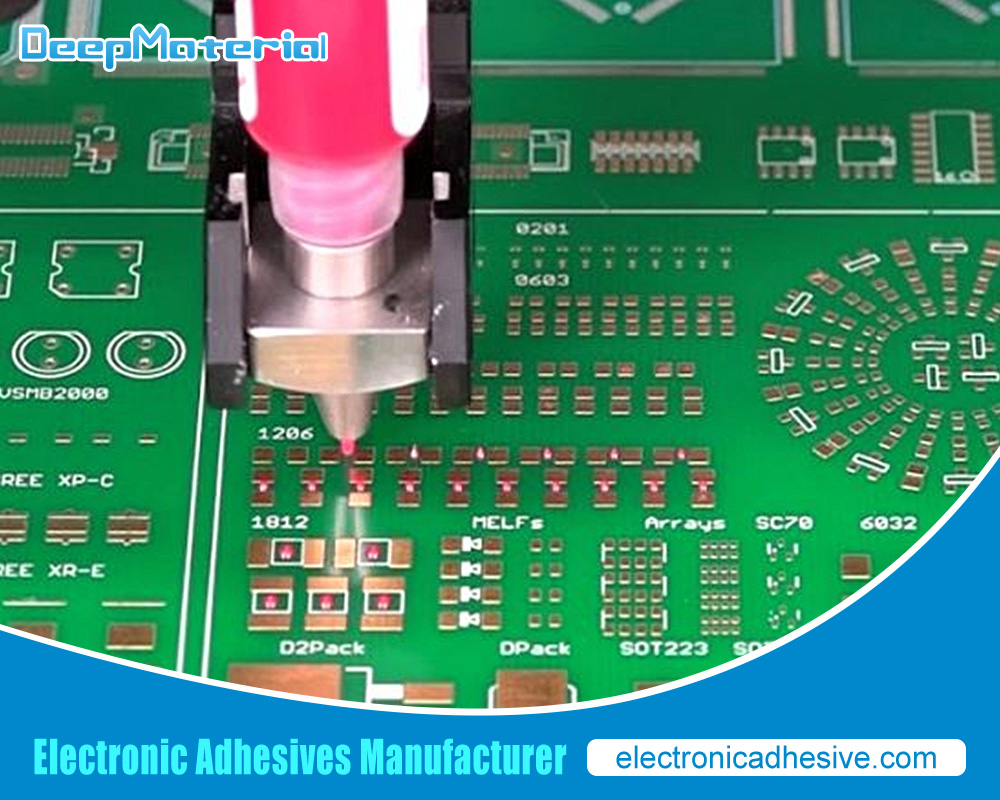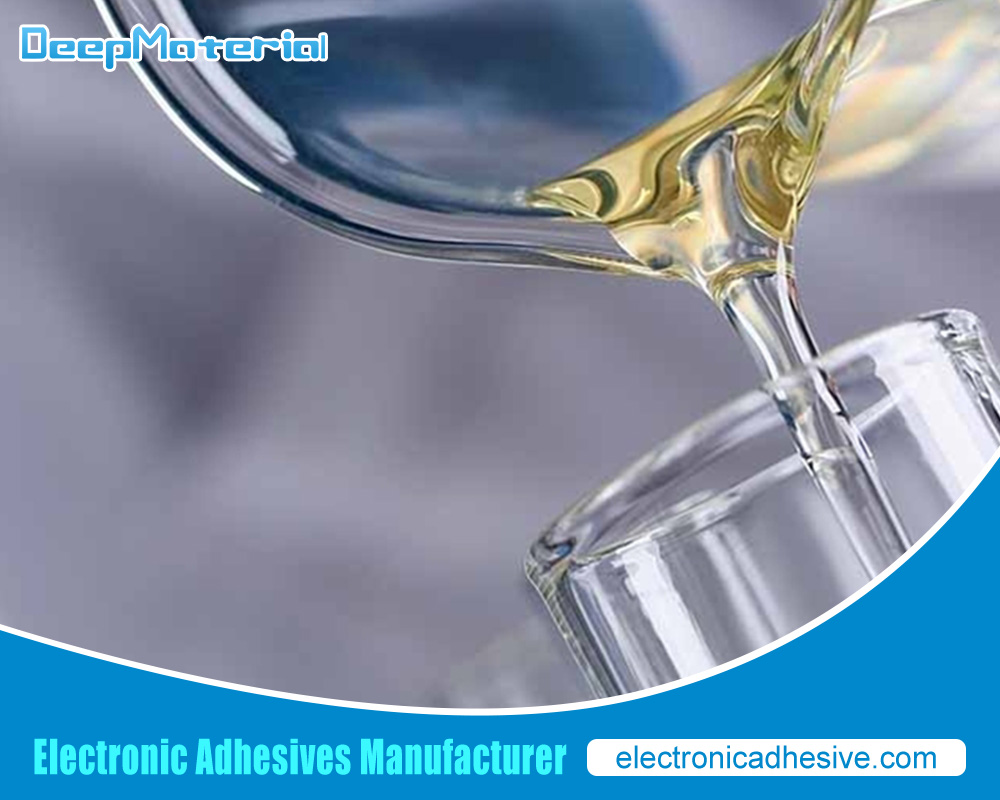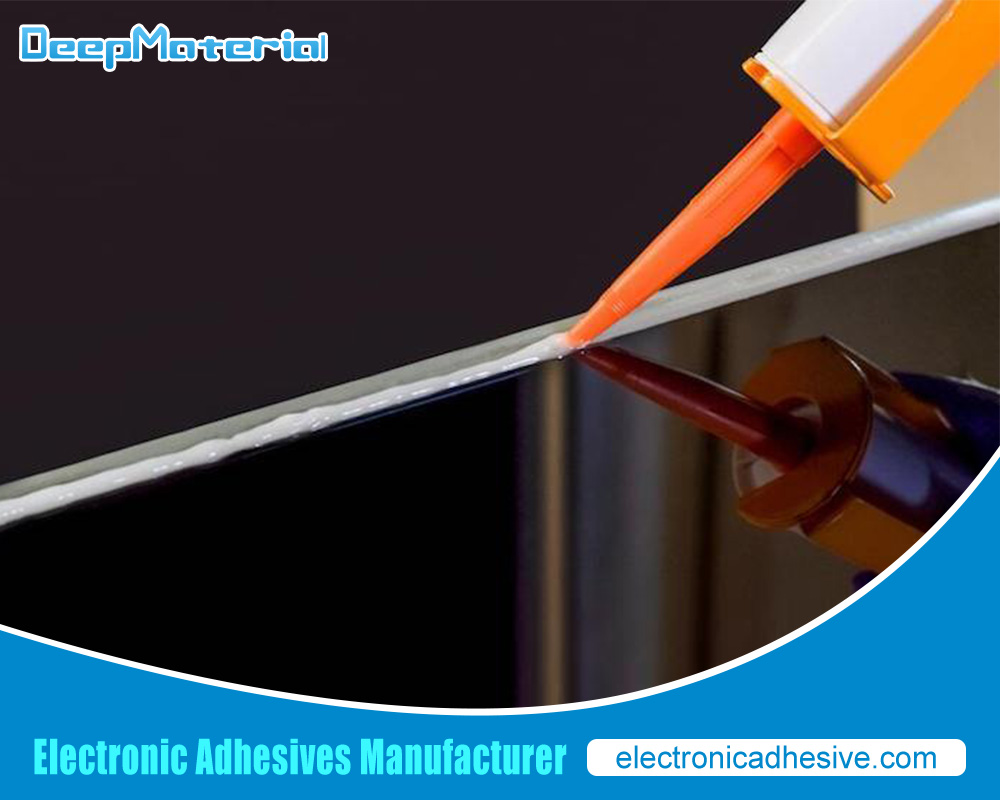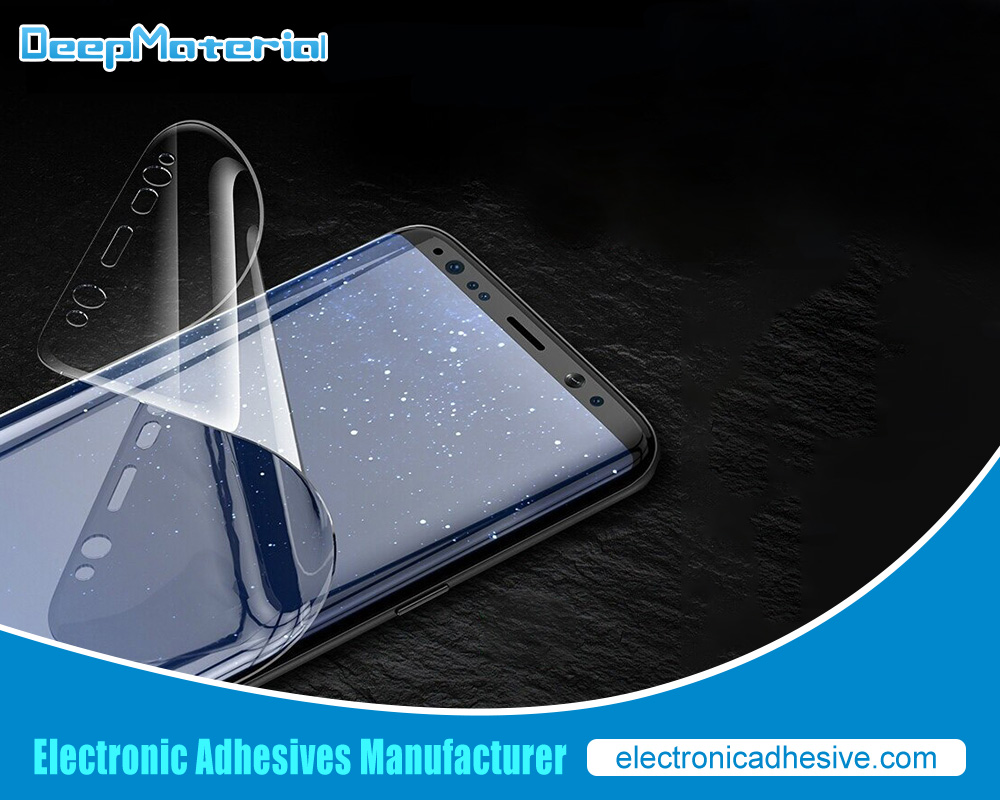Optical Organic Silica Gel

Introduction: Optical organic silica gel, a cutting-edge material, has gained significant attention recently due to its unique properties and versatile applications. It is a hybrid material that combines the benefits of organic compounds with the silica gel matrix, resulting in exceptional optical properties. With its remarkable transparency, flexibility, and tunable properties, optical organic silica gel holds great potential in various fields, from optics and photonics to electronics and biotechnology.
Transparent and High Optical Clarity
Optical organic silica gel is a material that exhibits exceptional transparency and high optical clarity. This unique characteristic makes it a valuable component in various applications, ranging from optics and electronics to biomedical devices. In this article, we will explore the properties and advantages of optical organic silica gel in detail.
Optical organic silica gel is a type of transparent gel that is composed of organic compounds and silica nanoparticles. Its manufacturing process involves the synthesis of a sol-gel, where the organic compounds and silica nanoparticles form a colloidal suspension. This suspension is then allowed to undergo a gelation process, resulting in a solid, transparent gel with a three-dimensional network structure.
One of the key properties of optical organic silica gel is its high transparency. It allows light to pass through with minimal scattering or absorption, making it an ideal material for optical applications. Whether it is used in lenses, waveguides, or optical coatings, the gel’s transparency ensures that the maximum amount of light is transmitted, leading to clear and sharp images.
Additionally, optical organic silica gel possesses excellent optical clarity. Clarity refers to the absence of impurities or defects that could hinder the transmission of light. The gel’s manufacturing process can be carefully controlled to minimize impurities, resulting in a material with exceptional clarity. This property is crucial in applications where precise optical performance is required, such as in high-resolution microscopy or laser systems.
The high optical clarity of optical organic silica gel is attributed to its homogeneous structure and the absence of grain boundaries or crystalline regions. Unlike traditional silica glasses, which may have grain boundaries that scatter light, the gel’s structure is amorphous, ensuring a smooth transmission path for light waves. This feature enables the gel to achieve superior optical performance.
The optical properties of optical organic silica gel can be further enhanced by tailoring its composition and structure. By adjusting the concentration of organic compounds and silica nanoparticles, as well as the synthesis conditions, the refractive index of the gel can be precisely controlled. This enables the design and fabrication of optical components with specific optical properties, such as anti-reflective coatings or waveguides with tailored refractive index profiles.
Moreover, optical organic silica gel offers advantages over other materials in terms of flexibility and processability. Unlike rigid glass materials, the gel is soft and pliable, allowing it to be easily molded into complex shapes or integrated with other components. This flexibility opens up new possibilities for the design and fabrication of advanced optical devices, such as flexible displays or wearable optics.
Flexible and Shapeable Material
Optical organic silica gel is known for its transparency, high optical clarity, and unique flexibility and shapeability. This characteristic sets it apart from traditional rigid materials and opens up new possibilities for designing and fabricating advanced optical devices. In this article, we will explore the flexibility and capability of optical organic silica gel in detail.
One of the critical advantages of optical organic silica gel is its flexibility. Unlike conventional glass materials that are rigid and brittle, the gel is soft and pliable. This flexibility allows the gel to be easily bent, stretched, or deformed without breaking, making it an excellent choice for applications that require conformability to non-flat or curved surfaces. This feature is particularly beneficial in optics, where complex shapes and configurations are often desired.
The flexibility of optical organic silica gel is attributed to its unique structure. The gel consists of a three-dimensional network of organic compounds and silica nanoparticles. This structure provides mechanical strength and integrity while retaining its deformability. The organic compounds act as binders, holding the silica nanoparticles together and providing gel elasticity. This combination of organic and inorganic components results in a material that can be manipulated and reshaped without losing its optical properties.
Another significant advantage of optical organic silica gel is its shapeability. The gel can be molded into various forms, including intricate shapes and patterns, to meet specific design requirements. This capability is achieved through different fabrication techniques such as casting, molding, or 3D printing. The gel’s soft and pliable nature allows it to conform to molds or be extruded into complex geometries, producing customized optical components.
The capability of optical organic silica gel offers numerous benefits in practical applications. For example, in optics, the gel can be molded into lenses with non-conventional shapes, such as freeform or gradient index lenses. These lenses can provide improved optical performance and enhanced functionality compared to traditional lens designs. The ability to shape the gel also enables the integration of multiple visual elements into a single component, reducing the need for assembly and improving overall system performance.
Furthermore, the capability of optical organic silica gel makes it compatible with the fabrication of flexible and wearable optical devices. The gel can be formed into thin films or coatings that can be applied to flexible substrates, such as plastics or textiles. This opens possibilities for developing flexible displays, wearable sensors, or innovative materials with integrated optical functionalities. Combining optical properties, flexibility, and capability allows innovative and versatile optical systems to be created.
Tunable Refractive Index
One of the remarkable properties of optical organic silica gel is its tunable refractive index. The ability to control the refractive index of a material is of great importance in optics and photonics, as it allows for the design and fabrication of devices with specific optical properties. This article will explore the tunable refractive index of optical organic silica gel and its implications in various applications.
The refractive index is a fundamental property of a material that describes how light propagates through it. It is the ratio of the speed of light in a vacuum to its rate in the material. The refractive index determines the bending of light rays, the efficiency of light transmission, and the behavior of light at interfaces between different materials.
Optical organic silica gel offers the advantage of a tunable refractive index, meaning that its refractive index can be precisely controlled and adjusted within a specific range. This tunability is achieved by manipulating the composition and structure of the gel during its synthesis.
By varying the concentration of organic compounds and silica nanoparticles in the gel, as well as the synthesis conditions, it is possible to change the material’s refractive index. This flexibility in adjusting the refractive index allows for tailoring the optical properties of the gel to match specific application requirements.
The tunable refractive index of optical organic silica gel has significant implications in various fields. Optics enables the design and fabrication of anti-reflective coatings with tailored refractive index profiles. These coatings can be applied to optical elements to minimize unwanted reflections and increase light transmission efficiency. By matching the refractive index of the layer to that of the substrate or the surrounding medium, the reviews at the interface can be significantly reduced, resulting in improved optical performance.
Moreover, the tunable refractive index of optical organic silica gel is advantageous in integrated optics and waveguides. Waveguides are structures that guide and manipulate light signals in optical circuits. By engineering the refractive index of the gel, it is possible to create waveguides with specific propagation characteristics, such as controlling the speed of light or achieving efficient light confinement. This tunability enables the developing of compact and efficient optical devices, such as photonic integrated circuits and optical interconnects.
Additionally, the tunable refractive index of optical organic silica gel has implications in sensing and biosensing applications. Incorporating specific organic or inorganic dopants into the gel makes creating sensing elements interacting with particular analytes or biological molecules possible. The refractive index of the gel can be precisely adjusted to optimize the sensitivity and selectivity of the sensor, leading to enhanced detection capabilities.
Optical Waveguides and Light Transmission
Optical waveguides are structures that guide and confine light within a specific medium, enabling efficient transmission and manipulation of light signals. With its unique properties, optical organic silica gel offers excellent potential as a material for optical waveguides, providing effective light communication and versatile applications.
Optical waveguides are designed to confine and guide light along a specific path, typically using a core material with a higher refractive index surrounded by a lower refractive index cladding. This ensures that light propagates through the core while confined, preventing excessive loss or dispersion.
Optical organic silica gel can be suitable for waveguide fabrication due to its tunable refractive index and flexible nature. The refractive index of the gel can be precisely adjusted by varying its composition and synthesis parameters, allowing for tailored refractive index profiles suitable for guiding light. By controlling the refractive index of the gel, it becomes possible to achieve efficient light confinement and low-loss propagation.
The flexible nature of optical organic silica gel enables the fabrication of waveguides with various shapes and configurations. It can be molded or shaped into desired geometries, creating waveguides with intricate patterns or unconventional structures. This flexibility is advantageous for integrated optics, where waveguides must be precisely aligned with other optical components for efficient light coupling and integration.
Optical waveguides made from optical organic silica gel offer several advantages. First and foremost, they exhibit low visual loss, allowing for efficient light transmission over long distances. The homogeneous structure and absence of impurities in the gel contribute to minimal scattering or absorption, resulting in high transmission efficiency and low signal degradation.
The tunability of the refractive index in optical organic silica gel waveguides enables the control of various optical parameters, such as the group velocity and dispersion characteristics. This allows for tailoring the waveguide properties to match specific application requirements. For instance, by engineering the refractive index profile, it is possible to create waveguides with dispersion properties that compensate for chromatic dispersion, enabling high-speed data transmission without significant signal distortion.
Additionally, the flexible nature of optical organic silica gel waveguides enables their integration with other components and materials. They can be seamlessly integrated into flexible or curved substrates, enabling the development of bendable or conformable optical systems. This flexibility opens up new possibilities for applications such as wearable optics, flexible displays, or biomedical devices.
Photonic Devices and Integrated Circuits
Optical organic silica gel holds excellent potential for developing photonic devices and integrated circuits. Its unique properties, including tunable refractive index, flexibility, and transparency, make it a versatile material for realizing advanced optical functionalities. This article will explore the applications of optical organic silica gel in photonic devices and integrated circuits.
Photonic devices and integrated circuits are essential components in various optical systems, enabling the manipulation and control of light for a wide range of applications. Optical organic silica gel offers several advantages that suit these applications well.
One of the key advantages is the tunable refractive index of optical organic silica gel. This property allows for the precise control of light propagation within the devices. By engineering the refractive index of the gel, it is possible to design and fabricate devices with tailored optical properties, such as waveguides, lenses, or filters. The ability to precisely control the refractive index enables developing of devices with optimized performance, such as low-loss waveguides or high-efficiency light couplers.
Moreover, the flexibility of optical organic silica gel is highly advantageous for photonic devices and integrated circuits. The gel’s soft and pliable nature enables the integration of optical components onto curved or flexible substrates. This flexibility opens up new possibilities for the design of novel devices, including flexible displays, wearable optics, or conformable optical sensors. Conforming to non-planar surfaces allows for creating of compact and versatile optical systems.
Additionally, optical organic silica gel offers the advantage of compatibility with various fabrication techniques. It can be easily molded, shaped, or patterned using casting, molding, or 3D printing techniques. This flexibility in fabrication enables the realization of complex device architectures and integration with other materials or components. For example, the gel can be directly printed onto substrates or integrated with semiconductor materials, facilitating the development of hybrid photonic devices and integrated circuits.
The transparency of optical organic silica gel is another critical property for photonic applications. The gel exhibits high optical clarity, allowing efficient light transmission with minimal scattering or absorption. This transparency is crucial for achieving high device performance, as it minimizes signal loss and ensures accurate light control within the devices. The clarity of the gel also enables the integration of various optical functionalities, such as light detection, modulation, or sensing, within a single device or circuit.
Optical Sensors and Detectors
Optical organic silica gel has emerged as a promising material for optical sensors and detectors. Its unique properties, including tunable refractive index, flexibility, and transparency, make it well-suited for various sensing applications. This article will explore the use of optical organic silica gel in optical sensors and detectors.
Optical sensors and detectors are crucial in various fields, including environmental monitoring, biomedical diagnostics, and industrial sensing. They utilize the interaction between light and the sensing material to detect and measure specific parameters or analytes. Optical organic silica gel offers several advantages, making it an attractive choice for these applications.
One of the key advantages is the tunable refractive index of optical organic silica gel. This property allows for the design and fabrication of sensors with enhanced sensitivity and selectivity. By carefully engineering the refractive index of the gel, it is possible to optimize the interaction between light and the sensing material, leading to improved detection capabilities. This tunability enables the development of sensors that can selectively interact with specific analytes or molecules, resulting in enhanced detection accuracy.
The flexibility of optical organic silica gel is another valuable characteristic of optical sensors and detectors. The gel can be shaped, molded, or integrated onto flexible substrates, enabling the creation of conformable and wearable sensing devices. This flexibility allows for integrating sensors into curved or irregular surfaces, expanding the possibilities for applications such as wearable biosensors or distributed sensing systems. The gel’s soft and pliable nature also enhances the sensors’ mechanical stability and reliability.
Additionally, the transparency of optical organic silica gel is crucial for optical sensors and detectors. The gel exhibits high optical clarity, allowing efficient light transmission through the sensing material. This transparency ensures accurate detection and measurement of the optical signals, minimizing signal loss and distortion. The gel’s transparency also enables the integration of additional optical components, such as light sources or filters, within the sensor device, enhancing its functionality.
Optical organic silica gel can be functionalized by incorporating specific organic or inorganic dopants into the gel matrix. This functionalization enables the development of sensors that can selectively interact with target analytes or molecules. For example, the gel can be doped with fluorescent molecules that exhibit a fluorescence intensity or spectrum change upon binding to a specific analyte. This enables the development of high-sensitivity and selectivity optical sensors for various applications, including chemical sensing, environmental monitoring, and biomedical diagnostics.

Nonlinear Optical Properties
Nonlinear optical properties are crucial in various applications, including telecommunications, laser technology, and optical signal processing. Organic silica gels, composed of inorganic silica nanoparticles embedded in an organic matrix, have attracted significant attention due to their unique properties and potential for nonlinear optics.
Organic silica gels exhibit a range of nonlinear optical phenomena, including the visual Kerr effect, two-photon absorption, and harmonic generation. The visual Kerr effect refers to the change in refractive index induced by an intense light field. This effect is essential for applications such as all-optical switching and modulation. Organic silica gels can exhibit a large Kerr nonlinearity due to their unique nanostructure and organic chromophores within the matrix.
Two-photon absorption (TPA) is another nonlinear optical phenomenon observed in organic silica gels. TPA involves the simultaneous absorption of two photons, resulting in a transition to an excited state. This process enables three-dimensional optical data storage, high-resolution imaging, and photodynamic therapy. Organic silica gels with appropriate chromophores can exhibit a high TPA cross-section, allowing efficient two-photon processes.
Harmonic generation is a nonlinear process in which incident photons are converted into higher-order harmonics. Organic silica gels can exhibit significant second and third-harmonic generation, making them attractive for frequency-doubling and frequency-tripling applications. Combining their unique nanostructure and organic chromophores enables efficient energy conversion and high nonlinear susceptibility.
The nonlinear optical properties of organic silica gels can be tailored by controlling their composition and nanostructure. The choice of organic chromophores and their concentration within the gel matrix can influence the magnitude of the nonlinear optical effects. Additionally, the size and distribution of the inorganic silica nanoparticles can impact the overall nonlinear response. By optimizing these parameters, it is possible to enhance the nonlinear optical performance of organic silica gels.
Furthermore, organic silica gels offer flexibility, transparency, and processability, making them suitable for various optical device applications. They can be easily fabricated into thin films or integrated with other materials, enabling the development of compact and versatile nonlinear optical devices. Additionally, the organic matrix provides mechanical stability and protection for the embedded nanoparticles, ensuring the long-term reliability of the nonlinear optical properties.
Biocompatibility and Biomedical Applications
Biocompatible materials are critical in various biomedical applications, from drug delivery systems to tissue engineering. Optical organic silica gels, composed of inorganic silica nanoparticles embedded in an organic matrix, offer a unique combination of optical properties and biocompatibility, making them attractive for various biomedical applications.
Biocompatibility is a fundamental requirement for any material intended for biomedical use. Optical organic silica gels exhibit excellent biocompatibility due to their composition and nanostructure. The inorganic silica nanoparticles provide mechanical stability, while the organic matrix offers flexibility and compatibility with biological systems. These materials are non-toxic and have been shown to have minimal adverse effects on cells and tissues, making them suitable for use in vivo.
One of the critical biomedical applications of optical organic silica gels is in drug delivery systems. The porous structure of the gels allows for high loading capacities of therapeutic agents, such as drugs or genes. The release of these agents can be controlled by modifying the gel’s composition or incorporating stimuli-responsive components. The gels’ optical properties also enable real-time drug release monitoring through techniques such as fluorescence or Raman spectroscopy.
Optical organic silica gels can also be utilized in bioimaging applications. The presence of organic chromophores within the gel matrix allows for fluorescence labeling, enabling visualization and tracking of cells and tissues. The gels can be functionalized with targeting ligands to specifically label diseased cells or tissues, aiding in early detection and diagnosis. Moreover, the gels’ optical transparency in the visible and near-infrared range makes them suitable for imaging techniques like optical coherence tomography or multiphoton microscopy.
Another promising application of optical organic silica gels is in tissue engineering. The porous structure of the gels provides a favorable environment for cell growth and tissue regeneration. The gels can be functionalized with bioactive molecules to enhance cellular adhesion, proliferation, and differentiation. Additionally, the optical properties of the gels can be leveraged for the visual stimulation of cells, enabling precise control over tissue regeneration processes.
Furthermore, optical organic silica gels have shown potential in optogenetics, which combines optics and genetics to control cellular activity using light. By incorporating light-sensitive molecules into the gel matrix, the gels can act as substrates for the growth and stimulation of light-responsive cells. This opens up new possibilities for studying and modulating neural activity and developing therapies for neurological disorders.
Optical Filters and Coatings
Optical filters and coatings are essential components in various optical systems, ranging from cameras and lenses to laser systems and spectrometers. Optical organic silica gels, composed of inorganic silica nanoparticles embedded in an organic matrix, offer unique properties that make them attractive for optical filter and coating applications.
One of the critical advantages of optical organic silica gels is their ability to control and manipulate light through their composition and nanostructure. By carefully selecting the size and distribution of the inorganic silica nanoparticles and incorporating appropriate organic chromophores, it is possible to engineer optical filters with specific transmission or reflection characteristics. These filters can transmit or block particular wavelengths, enabling wavelength selection, color filtering, or light attenuation applications.
Furthermore, the porous structure of the gels allows for incorporating various dopants or additives, further enhancing their filtering capabilities. For example, dyes or quantum dots can be embedded in the gel matrix to achieve narrowband filtering or fluorescence emission. By tuning the concentration and type of dopants, the optical properties of the filters can be precisely controlled, enabling custom-designed optical coatings.
Optical organic silica gels can also be utilized as anti-reflection coatings. The refractive index of the gel matrix can be tailored to match that of the substrate material, minimizing reflection losses and maximizing light transmission. Additionally, the porous nature of the gels can be utilized to create graded refractive index profiles, reducing the occurrence of surface reflections over a broad range of wavelengths. This makes the gels suitable for improving the efficiency and performance of optical systems.
Another critical aspect of optical filters and coatings is their durability and stability over time. Optical organic silica gels exhibit excellent mechanical strength and resistance to environmental factors like temperature and humidity. The inorganic silica nanoparticles provide mechanical reinforcement, preventing cracking or delamination of the coatings. The organic matrix protects the nanoparticles from degradation and ensures the long-term reliability of the filters and layers.
Moreover, the flexibility and processability of optical organic silica gels offer advantages in terms of coating application. The gels can be quickly deposited onto various substrates, including curved or non-planar surfaces, through spin coating or dip coating. This enables the production of optical filters and coatings on complex-shaped optics or flexible substrates, expanding their potential in applications such as wearable devices or bendable displays.
Optical Fibers and Communication Systems
Optical fibers and communication systems are essential for high-speed data transmission and telecommunications. Optical organic silica gels, composed of inorganic silica nanoparticles embedded in an organic matrix, offer unique properties that make them attractive for optical fiber and communication system applications.
One of the critical advantages of optical organic silica gels is their excellent optical transparency. The inorganic silica nanoparticles provide a high refractive index, while the organic matrix offers mechanical stability and protection. This combination allows for low-loss transmission of light over long distances, making optical organic silica gels suitable for use as optical fiber cores.
The porous structure of the gels can be utilized to enhance the performance of optical fibers. Introducing air holes or voids within the gel matrix makes it possible to create photonic crystal fibers. These fibers exhibit unique light-guiding properties, such as single-mode operation or large-mode areas, which benefit applications requiring high-power transmission or dispersion management.
Furthermore, optical organic silica gels can be engineered for specific dispersion characteristics. By tailoring the composition and nanostructure, it is possible to control the material’s chromatic dispersion, which affects the propagation of different wavelengths of light. This enables the design of dispersion-shifted or dispersion-compensating fibers, which is crucial in mitigating dispersion effects in optical communication systems.
Optical organic silica gels also offer advantages in terms of nonlinear optical properties. The gels can exhibit large nonlinearities, such as the visual Kerr effect or two-photon absorption, which can be harnessed for various applications. For example, they can be used to develop all-optical signal processing devices, including wavelength conversion, modulation, or switching. The nonlinear properties of the gels allow for efficient and high-speed data transmission in optical communication systems.
Moreover, the flexibility and processability of optical organic silica gels make them suitable for specialty optical fiber designs. They can be easily shaped into fiber geometries, such as tapered or microstructured fibers, enabling the development of compact and versatile fiber-based devices. These devices can be used for applications such as sensing, bioimaging, or endoscopy, expanding the capabilities of optical fiber systems beyond traditional telecommunications.
Another advantage of optical organic silica gels is their biocompatibility, making them suitable for biomedical applications in fiber-based medical diagnostics and therapy. Fiber-based sensors and probes can be integrated with the gels, allowing for minimally invasive monitoring or treatment. The biocompatibility of the gels ensures compatibility with biological systems and reduces the risk of adverse reactions or tissue damage.

Display Technologies and Transparent Electronics
Display technologies and transparent electronics play a significant role in various applications, including consumer electronics, augmented reality, and bright windows. Optical organic silica gels, composed of inorganic silica nanoparticles embedded in an organic matrix, offer unique properties that make them attractive for these technologies.
One of the critical advantages of optical organic silica gels is their transparency in the visible range of the electromagnetic spectrum. The inorganic silica nanoparticles provide a high refractive index, while the organic matrix offers mechanical stability and flexibility. This combination allows for development of transparent films and coatings that can be used in display technologies.
Optical organic silica gels can be utilized as transparent electrodes, replacing conventional indium tin oxide (ITO) electrodes. The gels can be processed into thin, flexible, and conductive films, enabling the fabrication of transparent touchscreens, flexible displays, and wearable electronics. The high transparency of the gels ensures excellent light transmission, resulting in vibrant and high-quality display images.
Moreover, the flexibility and processability of optical organic silica gels make them suitable for flexible display applications. The gels can be shaped into various forms, such as curved or foldable displays, without compromising their optical properties. This flexibility opens up new possibilities for innovative and portable display devices, including flexible smartphones, rollable screens, or wearable displays.
In addition to their transparency and flexibility, optical organic silica gels can exhibit other desirable properties for display technologies. For example, they can have excellent thermal stability, allowing them to withstand high temperatures encountered during display fabrication. The gels can also have good adhesion to various substrates, ensuring the long-term durability and reliability of the display devices.
Furthermore, optical organic silica gels can be engineered to exhibit specific visual effects, such as light scattering or diffraction. This property can be harnessed to create privacy filters, soft control films, or three-dimensional displays. The gels can be patterned or textured to manipulate light propagation, enhancing the visual experience and adding functionality to display technologies.
Another promising application of optical organic silica gels is in transparent electronics. The gels can act as dielectric materials or gate insulators in transparent transistors and integrated circuits. Exemplary electronic devices can be fabricated by integrating organic or inorganic semiconductors with the gels. These devices can be used in delicate logic circuits, sensors, or energy harvesting systems.
Optical organic silica gels can also be utilized in bright windows and architectural glass. The gels can be incorporated into electrochromic or thermochromic systems, enabling control over the transparency or color of the glass. This technology finds applications in energy-efficient buildings, privacy control, and glare reduction, providing enhanced comfort and functionality.
Optical Wave Plates and Polarizers
Optical wave plates and polarizers are essential components in optical systems for manipulating the polarization state of light. Optical organic silica gels, composed of inorganic silica nanoparticles embedded in an organic matrix, offer unique properties that make them attractive for optical wave plate and polarizer applications.
One of the critical advantages of optical organic silica gels is their ability to control the polarization of light through their composition and nanostructure. By carefully selecting the size and distribution of the inorganic silica nanoparticles and incorporating appropriate organic chromophores, it is possible to engineer optical wave plates and polarizers with specific polarization characteristics.
Optical wave plates, also known as retardation plates, introduce a phase delay between the polarization components of incident light. Optical organic silica gels can be designed to have birefringent properties, meaning they exhibit different refractive indices for different polarization directions. By controlling the orientation and thickness of the gel, it is possible to create wave plates with specific retardation values and orientations. These wave plates find applications in polarization manipulation, such as polarization control, polarization analysis, or compensation of birefringence effects in optical systems.
Optical organic silica gels can also be utilized as polarizers, which selectively transmit light of a specific polarization state while blocking the orthogonal polarization. The orientation and distribution of the inorganic silica nanoparticles within the gel matrix can be tailored to achieve high extinction ratios and efficient polarization discrimination. These polarizers find applications in various optical systems, such as displays, visual communications, or polarimetry.
Moreover, the flexibility and processability of optical organic silica gels offer advantages in fabricating wave plates and polarizers. The gels can be easily shaped into different geometries, such as thin films, fibers, or microstructures, allowing for the integrating of these components into a wide range of optical systems. The mechanical stability of the gels ensures the durability and long-term performance of the wave plates and polarizers.
Another advantage of optical organic silica gels is their tunability. The properties of the gels, such as the refractive index or birefringence, can be controlled by adjusting the composition or the presence of dopants or additives. This tunability enables the customization of wave plates and polarizers to specific wavelength ranges or polarization states, enhancing their versatility and applicability in different optical systems.
Furthermore, the biocompatibility of optical organic silica gels makes them suitable for bioimaging, biomedical diagnostics, or sensing applications. The gels can be integrated into optical systems for polarization-sensitive imaging or detection of biological samples. The compatibility of the gels with biological systems reduces the risk of adverse reactions and enables their use in biophotonic applications.
Optical Imaging and Microscopy
Optical imaging and microscopy techniques are crucial in various scientific and medical applications, enabling visualization and analysis of microscopic structures. Optical organic silica gels, composed of inorganic silica nanoparticles embedded in an organic matrix, offer unique properties that make them attractive for optical imaging and microscopy.
One of the critical advantages of optical organic silica gels is their optical transparency and low light scattering. The inorganic silica nanoparticles provide a high refractive index, while the organic matrix offers mechanical stability and protection. This combination allows for high-quality imaging by minimizing light attenuation and scattering, producing clear and sharp images.
Optical organic silica gels can be utilized as optical windows or coverslips for microscopy setups. Their transparency in the visible and near-infrared range allows for efficient light transmission, enabling detailed imaging of specimens. The gels can be processed into thin, flexible films or slides, making them suitable for conventional soft microscopy techniques.
Furthermore, the porous structure of optical organic silica gels can be leveraged to enhance imaging capabilities. The gels can be functionalized with fluorescent dyes or quantum dots, which can be used as contrast agents for specific imaging applications. Incorporating these imaging agents within the gel matrix enables labeling and visualization of specific cellular structures or biomolecules, providing valuable insights into biological processes.
Optical organic silica gels can also be utilized in advanced imaging techniques, such as confocal or multiphoton microscopy. The gels’ high optical transparency and low autofluorescence make them suitable for imaging deep within biological samples. The gels can serve as optical windows or sample holders, allowing for the precise focusing and imaging of specific regions of interest.
Additionally, the flexibility and processability of optical organic silica gels offer advantages in developing microfluidic devices for imaging applications. The gels can be shaped into microchannels or chambers, enabling the integration of imaging platforms with controlled fluid flow. This allows for real-time observation and analysis of dynamic processes, such as cell migration or fluidic interactions.
Moreover, the biocompatibility of optical organic silica gels makes them suitable for imaging applications in biology and medicine. The gels have been shown to have minimal cytotoxicity and can be safely used with biological samples. They can be employed in imaging systems for biological research, such as live cell imaging, tissue imaging, or in vitro diagnostics.
Environmental Sensing and Monitoring
Environmental sensing and monitoring are crucial in understanding and managing the Earth’s ecosystems and natural resources. It involves collecting and analyzing data related to various environmental parameters, such as air quality, water quality, climate conditions, and biodiversity. These monitoring efforts aim to assess the state of the environment, identify potential threats, and support decision-making processes for sustainable development and conservation.
One of the critical areas of environmental sensing and monitoring is air quality assessment. With urbanization and industrialization, air pollution has become a significant concern. Monitoring systems measure pollutant concentrations, including particulate matter, nitrogen dioxide, ozone, and volatile organic compounds. These sensors are deployed in urban areas, industrial zones, and near pollution sources to track pollution levels and identify hotspots, enabling policymakers to implement targeted interventions and improve air quality.
Water quality monitoring is another critical aspect of environmental sensing. It involves assessing water bodies’ chemical, physical, and biological characteristics. Monitoring systems measure parameters such as pH, temperature, dissolved oxygen, turbidity, and concentrations of pollutants like heavy metals and nutrients. Real-time monitoring stations and remote sensing technologies provide valuable data on water quality, helping to detect pollution sources, manage water resources, and protect aquatic ecosystems.
Climate monitoring is essential for understanding climate patterns and changes over time. It measures temperature, precipitation, humidity, wind speed, and solar radiation. Climate monitoring networks include weather stations, satellites, and other remote sensing technologies. These systems provide data for climate modeling, weather forecasting, and assessing long-term climate trends, supporting decision-making in agriculture, disaster management, and infrastructure planning.
Biodiversity monitoring tracks various species and ecosystems’ abundance, distribution, and health. It involves field surveys, remote sensing, and citizen science initiatives. Biodiversity monitoring helps scientists and conservationists understand the impacts of habitat loss, climate change, and invasive species. By monitoring biodiversity, we can identify endangered species, assess the effectiveness of conservation measures, and make informed decisions to protect and restore ecosystems.
Advancements in technology have greatly enhanced environmental sensing and monitoring capabilities. Wireless sensor networks, satellite imagery, drones, and IoT devices have made data collection more efficient, cost-effective, and accessible. Data analytics and machine learning algorithms enable the processing and interpretation of large datasets, facilitating early detection of environmental risks and the development of proactive strategies.

Solar Cells and Energy Harvesting
Solar energy is a renewable and clean source of power that holds great potential for addressing our increasing energy needs. Solar cells, also known as photovoltaic cells, are vital in converting sunlight into electricity. Traditional solar cells are primarily made of inorganic materials such as silicon, but there is growing interest in exploring organic materials for solar energy harvesting. One such material is optical organic silica gel, which offers unique advantages in solar cell technology.
Optical organic silica gel is a versatile material with exceptional optical properties, including high transparency and a broad absorption spectrum. These properties make it well-suited for capturing sunlight across different wavelengths, allowing for efficient energy conversion. Moreover, its flexible nature enables its integration into various surfaces, including curved and flexible structures, expanding the potential applications of solar cells.
The fabrication process of solar cells using optical organic silica gel involves several steps. The silica gel is initially synthesized and processed to achieve the desired morphology and optical characteristics. Depending on the specific requirements, it can be formulated as a thin film or embedded within a polymer matrix. This flexibility in material design enables the customization of solar cells to meet specific energy harvesting needs.
Once the optical organic silica gel is prepared, it is incorporated into the solar cell device. The gel acts as a light-absorbing layer, capturing photons from the sunlight and initiating the photovoltaic process. As photons are absorbed, they generate electron-hole pairs, separated by the built-in electric field within the device. This separation creates a flow of electrons, resulting in the generation of electrical current.
One of the notable advantages of optical organic silica gel-based solar cells is their cost-effectiveness. Compared to traditional inorganic solar cells, organic materials can be produced at lower costs and processed using more straightforward fabrication techniques. This affordability makes them a promising option for large-scale deployment, contributing to the widespread adoption of solar energy.
However, optical organic silica gel-based solar cells are also associated with challenges. Organic materials generally have lower efficiency than their inorganic counterparts due to limited charge carrier mobility and stability concerns. Researchers are actively working on improving the performance and stability of organic solar cells through material engineering and device optimization.
3D Printing and Additive Manufacturing
3D printing and additive manufacturing have revolutionized the manufacturing industry by enabling the creation of complex and customized structures with high precision and efficiency. While these techniques have predominantly been used with traditional materials such as plastics and metals, there is a growing interest in exploring their potential with innovative materials like optical organic silica gel. 3D printing and additive manufacturing of optical organic silica gel offers unique advantages and open new possibilities in various applications.
Optical organic silica gel is a versatile material with exceptional optical properties, making it suitable for various applications, including optics, sensors, and energy harvesting devices. By utilizing 3D printing and additive manufacturing techniques, it becomes possible to fabricate intricate structures and patterns with precise control over the material’s composition and geometry.
The process of 3D printing optical organic silica gel involves several steps. The silica gel is initially prepared by synthesizing and processing it to achieve the desired optical characteristics. The gel can be formulated with additives or dyes to enhance its functionality, such as light absorption or emission. Once the gel is prepared, it is loaded into a 3D printer or additive manufacturing system.
The 3D printer deposits and solidifies the optical organic silica gel layer by layer during the printing process, following a pre-designed digital model. The printer head precisely controls the deposition of the gel, allowing for the creation of intricate and complex structures. Depending on the specific application, different 3D printing techniques, such as stereolithography or inkjet printing, can be employed to achieve the desired resolution and accuracy.
The ability to 3D print optical organic silica gel offers numerous advantages. Firstly, it allows for creation of custom-shaped and highly tailored structures that are difficult to achieve with conventional fabrication methods. This capability is precious in applications such as micro-optics, where precise control over the shape and dimensions of optical components is critical.
Secondly, 3D printing enables the integration of optical organic silica gel with other materials or components, facilitating the creation of multifunctional devices. For example, optical waveguides or light-emitting diodes (LEDs) can be directly integrated into 3D-printed structures, leading to compact and efficient optoelectronic systems.
Furthermore, additive manufacturing techniques provide the flexibility to rapidly create prototypes and iterate designs, saving time and resources in the development process. It also allows for on-demand production, making manufacturing small quantities of specialized optical devices or components feasible without the need for expensive tooling.
However, challenges are associated with 3D printing and additive optical organic silica gel manufacturing. Developing printable formulations with optimized rheological properties and stability is crucial to ensure reliable printing processes. Additionally, the compatibility of printing techniques with high optical quality and the post-printing processing steps, such as curing or annealing, must be carefully considered to achieve desired optical properties.
Microfluidics and Lab-on-a-Chip Devices
Optical data storage refers to storing and retrieving digital information using light-based techniques. Optical discs, such as CDs, DVDs, and Blu-ray discs, have been widely used for data storage due to their high capacity and long-term stability. However, there is a continuous demand for alternative storage media with even higher storage densities and faster data transfer rates. With its unique optical properties and customizable characteristics, optical organic silica gel holds excellent potential for advanced visual data storage applications.
Optical organic silica gel is a versatile material that exhibits exceptional optical properties, including high transparency, low scattering, and a broad absorption spectrum. These properties make it well-suited for optical data storage, where precise control of light-matter interactions is crucial. By harnessing the unique properties of optical organic silica gel, it is possible to develop high-capacity and high-speed optical data storage systems.
One approach to utilizing optical organic silica gel in data storage is through the development of holographic storage systems. Holographic storage technology uses the principles of interference and diffraction to store and retrieve vast amounts of data in a three-dimensional volume. Optical organic silica gel can serve as the storage medium in holographic systems, creating customized holographic materials with tailored optical properties.
In holographic data storage, a laser beam is split into two beams: the signal beam carrying the data and the reference beam. The two beams intersect within the optical organic silica gel, creating an interference pattern that encodes the data into the gel’s structure. This interference pattern can be permanently recorded and retrieved by illuminating the gel with a reference beam and reconstructing the original data.
The unique properties of optical organic silica gel make it ideal for holographic data storage. Its high transparency ensures efficient light transmission, allowing precise interference patterns to be formed and retrieved. The gel’s broad absorption spectrum enables multi-wavelength recording and retrieval, enhancing storage capacity and data transfer rates. Moreover, the customizable characteristics of the gel allow the optimization of its photochemical and thermal properties for improved recording and stability.
Another potential application of optical organic silica gel in data storage is as a functional layer in optical memory devices. By incorporating the gel into the structure of visual memories, such as phase-change or magneto-optical memories, it becomes possible to enhance their performance and stability. The gel’s unique optical properties can be utilized to improve these devices’ sensitivity and signal-to-noise ratio, leading to higher data storage densities and faster data access speeds.
Additionally, the flexibility and versatility of optical organic silica gel allow for integrating other functional elements, such as nanoparticles or dyes, into the storage media. These additives can further enhance the optical properties and performance of the storage systems, enabling advanced functionalities like multi-level data storage or multi-color recording.
Despite the promising potential of optical organic silica gel in optical data storage, some challenges must be addressed. These include optimizing the material’s stability, durability, and compatibility with readout mechanisms. Ongoing research focuses on improving the recording and retrieval processes, developing suitable recording protocols, and exploring novel device architectures to overcome these challenges.
Optical Data Storage
Optical data storage is a technology that utilizes light-based techniques to store and retrieve digital information. Traditional optical storage media like CDs, DVDs, and Blu-ray discs have been widely used, but there is a continuous demand for higher-capacity and faster data storage solutions. With its unique optical properties and customizable characteristics, optical organic silica gel holds excellent potential for advanced visual data storage applications.
Optical organic silica gel is a versatile material with exceptional optical properties, including high transparency, low scattering, and a broad absorption spectrum. These properties make it well-suited for optical data storage, where precise control of light-matter interactions is crucial. By harnessing the unique properties of optical organic silica gel, it is possible to develop high-capacity and high-speed optical data storage systems.
Holographic storage is a promising application of optical organic silica gel in data storage. Holographic storage technology utilizes interference and diffraction principles to store and retrieve large amounts of data in a three-dimensional volume. Optical organic silica gel can serve as the storage medium in holographic systems, creating customized holographic materials with tailored optical properties.
In holographic data storage, a laser beam is split into two beams: the signal beam carrying the data and the reference beam. These beams intersect within the optical organic silica gel, creating an interference pattern that encodes the data into the gel’s structure. This interference pattern can be permanently recorded and retrieved by illuminating the gel with a reference beam and reconstructing the original data.
Optical organic silica gel is well-suited for holographic data storage due to its high transparency and broad absorption spectrum. These properties enable efficient light transmission and multi-wavelength recording, enhancing storage capacity and data transfer rates. The customizable characteristics of the gel also allow for the optimization of its photochemical and thermal properties, improving recording and stability.
Another optical organic silica gel application in data storage is as a functional layer in optical memory devices. By incorporating the gel into devices like phase-change or magneto-optical memories, its unique optical properties can enhance performance and stability. The gel’s high transparency and customizable characteristics can improve sensitivity and signal-to-noise ratio, leading to higher data storage densities and faster data access speeds.
Additionally, the flexibility and versatility of optical organic silica gel allow for integrating other functional elements, such as nanoparticles or dyes, into the storage media. These additives can further enhance the optical properties and performance of the storage systems, enabling advanced functionalities like multi-level data storage or multi-color recording.
However, there are challenges in utilizing optical organic silica gel for optical data storage. These include optimizing stability, durability, and compatibility with readout mechanisms. Ongoing research focuses on improving recording and retrieval processes, developing suitable recording protocols, and exploring novel device architectures to overcome these challenges.

Aerospace and Defense Applications
Optical organic silica gel, with its unique optical properties and customizable characteristics, holds significant potential for various applications in the aerospace and defense industries. Its versatility, high transparency, and compatibility with other materials make it suitable for multiple applications that require optical functionality, durability, and reliability in challenging environments.
One prominent application of optical organic silica gel in the aerospace and defense sectors is optical coatings and filters. These coatings and filters play a crucial role in enhancing the performance of optical systems, such as sensors, cameras, and imaging devices. The gel’s high transparency and low scattering properties make it an excellent candidate for antireflective coatings, protecting optical components from reflections and improving optical efficiency. Additionally, optical organic silica gel can be tailored to have specific absorption or transmission characteristics, allowing for the creation of customized filters that selectively transmit or block particular wavelengths of light, enabling applications like multispectral imaging or laser protection.
Optical organic silica gel is also advantageous for developing lightweight optical components and structures in aerospace and defense applications. It’s low density and high mechanical strength suit critical weight reduction applications, such as uncrewed aerial vehicles (UAVs) or satellites. By utilizing 3D printing or additive manufacturing techniques, optical organic silica gel can fabricate intricate and lightweight optical components, such as lenses, mirrors, or waveguides, enabling miniaturization and improved performance of optical systems in aerospace and defense platforms.
Another area where optical organic silica gel finds application is in optical fibers and sensors for aerospace and defense purposes. Optical fibers from the gel offer advantages such as high flexibility, low loss, and broad bandwidth. They can be used for high-speed data transmission, distributed sensing, or monitoring structural integrity in aircraft, spacecraft, or military equipment. The gel’s compatibility with functional additives allows for the development of optical fiber sensors that can detect various parameters like temperature, strain, or chemical agents, providing real-time monitoring and enhancing the safety and performance of aerospace and defense systems.
Furthermore, optical organic silica gel can be utilized in laser systems for aerospace and defense applications. Its high visual quality, low nonlinearities, and stability make it suitable for laser components and gain media. Optical organic silica gel can be doped with laser-active materials to create solid-state lasers or used as a host matrix for laser dye molecules in tunable lasers. These lasers find applications in target designation, range finding, LIDAR systems, and remote sensing, enabling precise measurements and imaging in demanding aerospace and defense environments.
However, there are challenges when utilizing optical organic silica gel in aerospace and defense applications. These include ensuring the gel’s long-term stability, resistance to environmental factors, and compatibility with stringent requirements such as temperature extremes, vibrations, or high-velocity impacts. Rigorous testing, qualification, and material characterization are necessary to ensure reliability and performance in these demanding applications.
Future Prospects and Challenges
Optical organic silica gel, with its unique optical properties and customizable characteristics, holds immense potential for various applications in various fields. As research and development in this area continue, several prospects and challenges arise, shaping the trajectory of optical organic silica gel technologies.
One of the promising prospects for optical organic silica gel is in the field of advanced photonics and optoelectronics. With its high transparency, low scattering, and broad absorption spectrum, the gel can develop high-performance photonic devices, such as integrated optical circuits, optical modulators, or light-emitting devices. The ability to customize the gel’s optical properties and its compatibility with other materials offer opportunities to integrate optical organic silica gel into advanced optoelectronic systems, enabling faster data transfer rates, enhanced sensing capabilities, and novel functionalities.
Another potential prospect lies in the realm of biomedical applications. Optical organic silica gel’s biocompatibility, customizable characteristics, and optical transparency make it a promising material for biomedical imaging, biosensing, drug delivery, and tissue engineering. Incorporating functional elements, such as fluorescent dyes or targeting molecules, into the gel makes it possible to develop advanced imaging probes, biosensors, and therapeutics with improved specificity and efficacy. The ability to fabricate optical organic silica gel in three-dimensional structures also opens avenues for tissue scaffolding and regenerative medicine.
Furthermore, optical organic silica gel holds potential for energy-related applications. Its high transparency and versatile fabrication techniques make it suitable for photovoltaics, light-emitting diodes (LEDs), and energy storage devices. By leveraging the gel’s optical properties and compatibility with other materials, it is possible to enhance the efficiency and performance of solar cells, develop more energy-efficient lighting solutions, and create new energy storage technologies with improved capacity and longevity.
However, some challenges must be addressed for the widespread adoption and commercialization of optical organic silica gel technologies. One significant challenge is the optimization of the gel’s stability and durability. As optical organic silica gel is exposed to various environmental factors, such as temperature, humidity, or UV radiation, its properties may degrade over time. Efforts are needed to improve the gel’s resistance to degradation and develop protective coatings or encapsulation methods to ensure long-term stability.
Another challenge is the scalability and cost-effectiveness of optical organic silica gel manufacturing processes. While research has demonstrated the feasibility of fabricating the gel through various techniques, scaling up production while maintaining quality and consistency remains challenging. Additionally, cost considerations, such as the availability and affordability of precursor materials, fabrication equipment, and post-processing steps, must be addressed to enable widespread adoption in various industries.
Moreover, further exploration of the gel’s fundamental properties and the developing of advanced characterization techniques are required. Understanding the gel’s photochemical, thermal, and mechanical properties in-depth is crucial for optimizing its performance and tailoring it for specific applications. Additionally, advancements in characterization methods will aid in quality control, ensuring consistent and reliable performance of optical organic silica gel-based devices.
Conclusion
In conclusion, optical organic silica gel is a promising material with exceptional optical properties, transparency, flexibility, and tunability. Its wide range of applications in optics, photonics, electronics, biotechnology, and beyond make it an attractive option for researchers and engineers seeking innovative solutions. With ongoing advancements and further research, optical organic silica gel holds the potential to revolutionize various industries and enable the development of advanced devices, sensors, and systems. As we continue to explore its capabilities, it is clear that optical organic silica gel will play a pivotal role in shaping the future of technology and scientific progress.





















